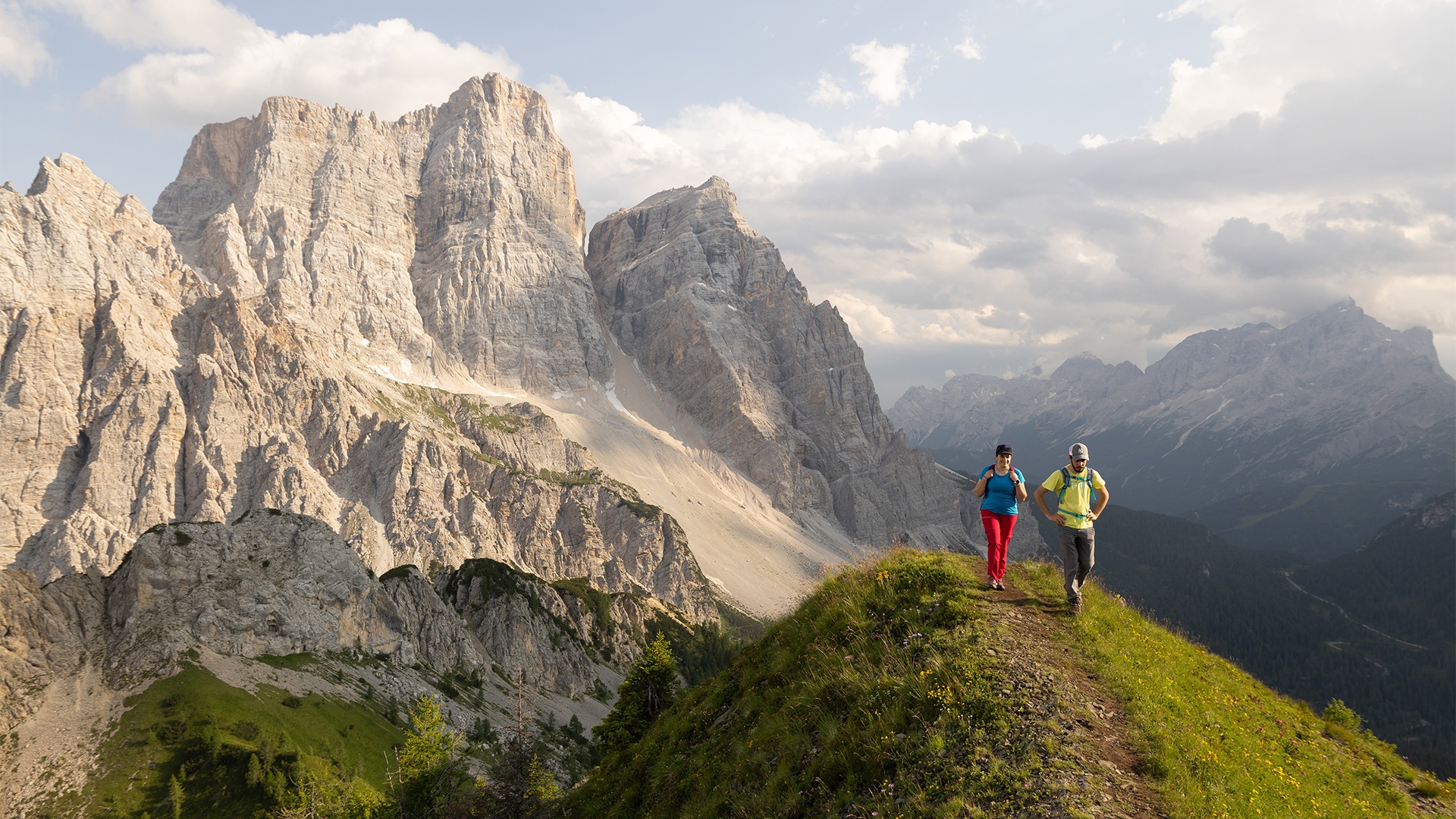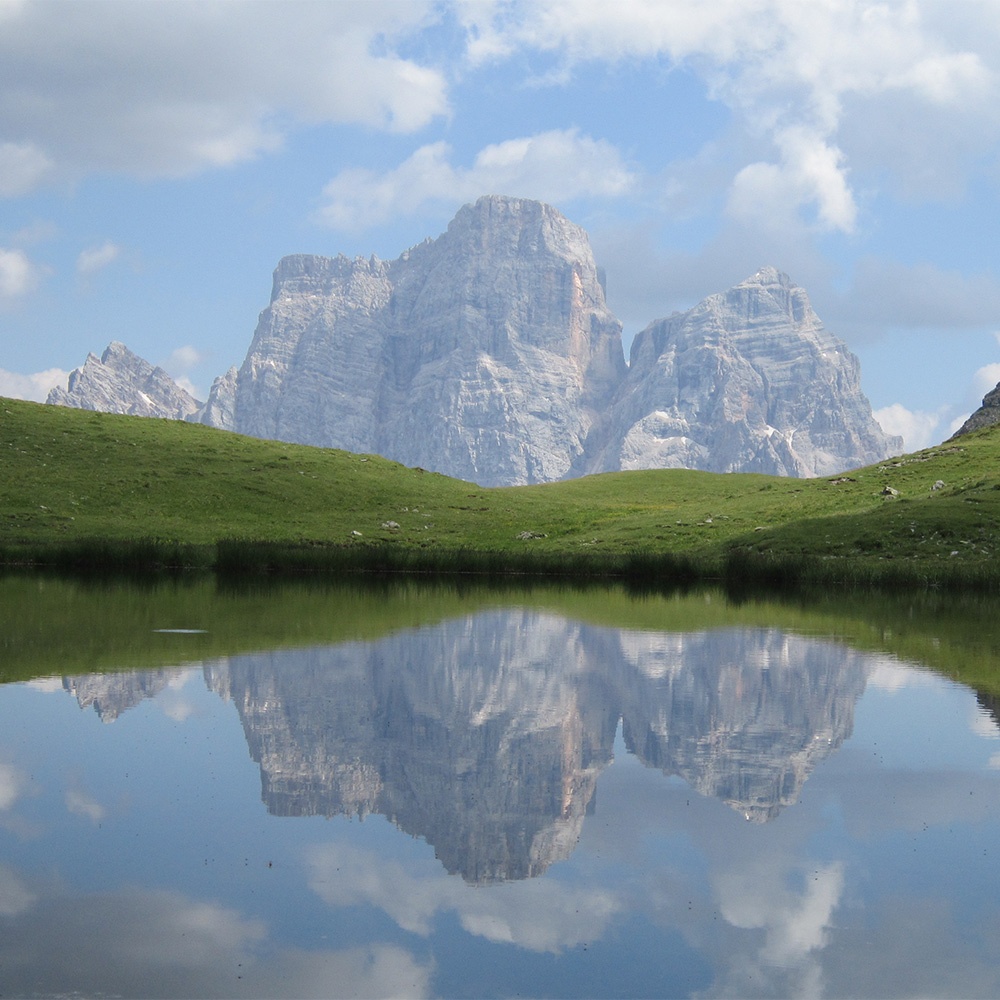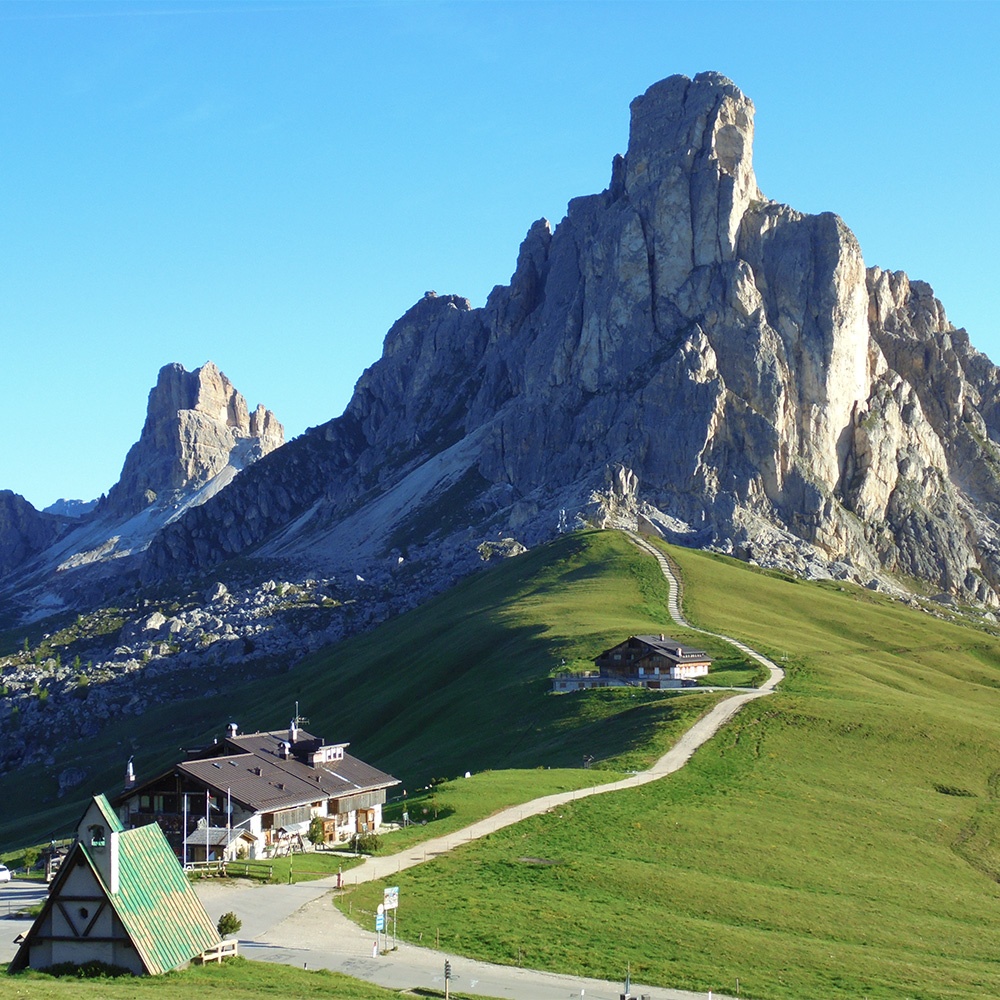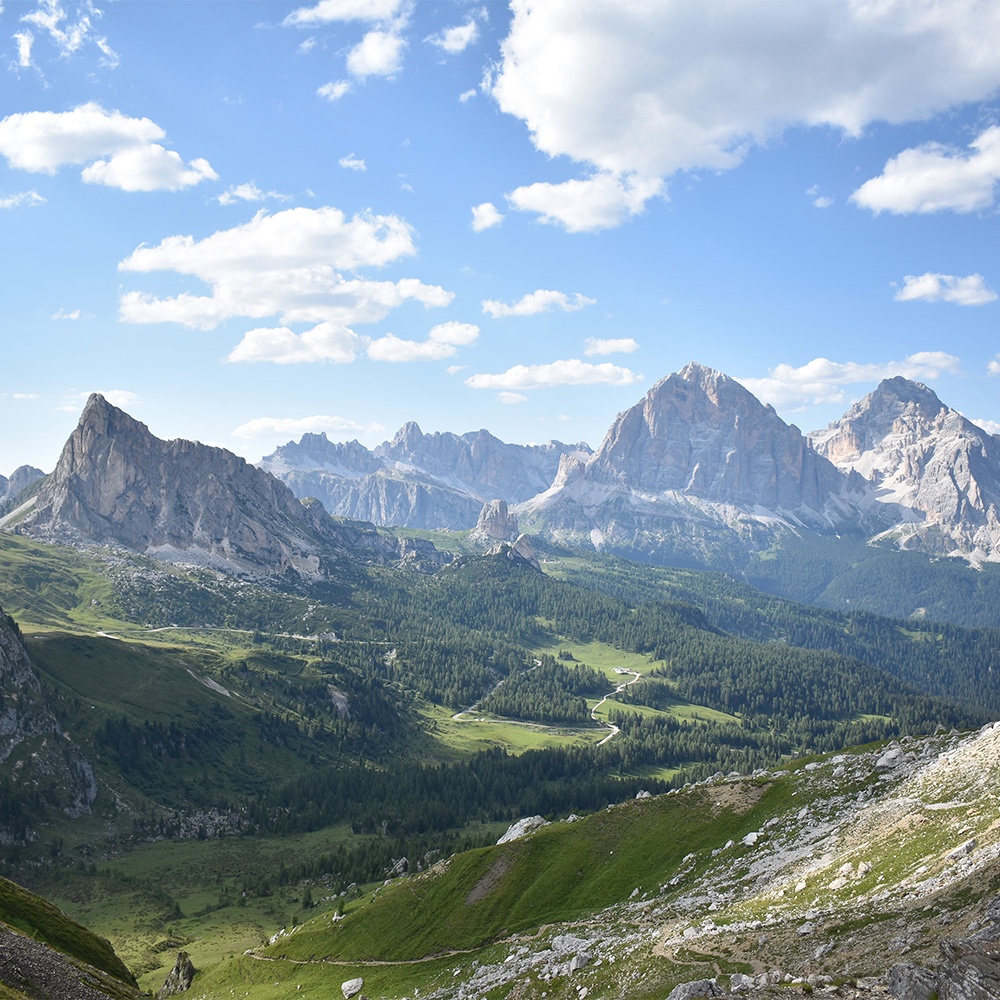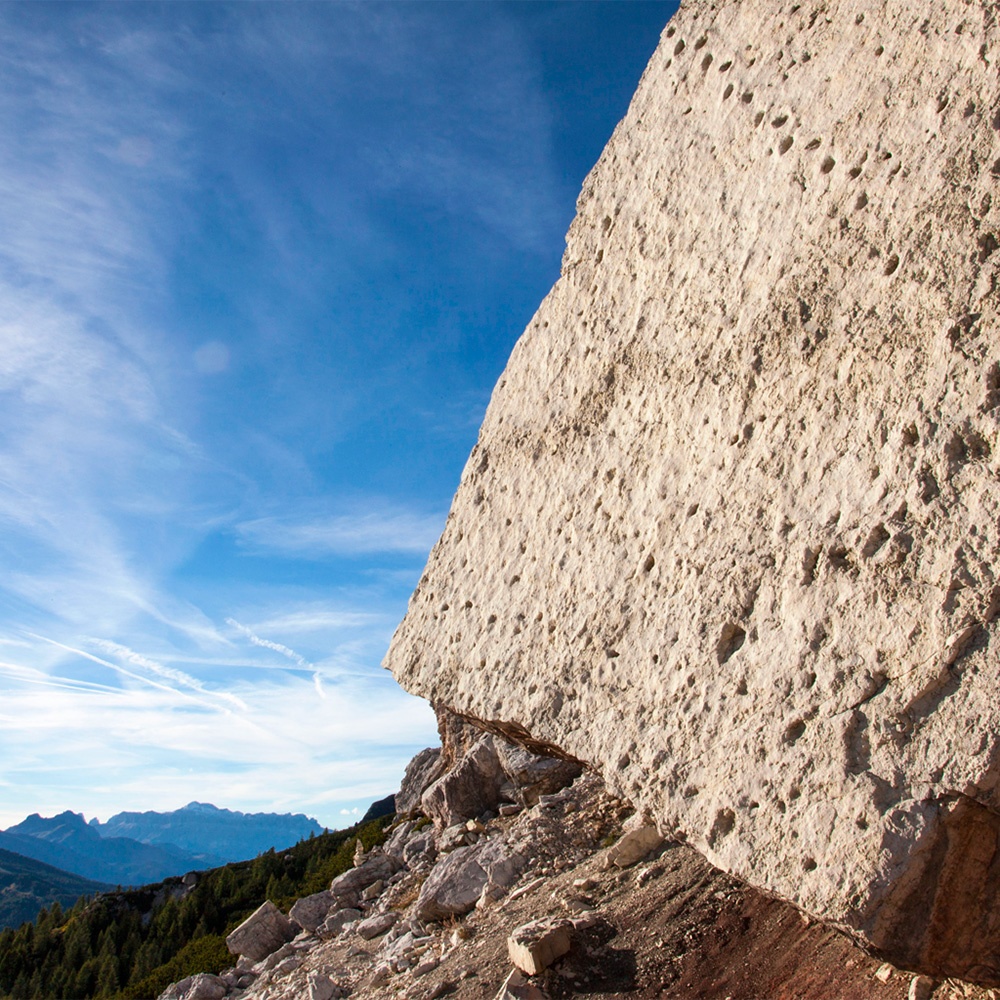
History of Val Fiorentina
Important historical finds bear testimony to the first traces of human presence in Val Fiorentina in prehistoric times which date back to the Mesolithic Age, such as the burial site of the Mondeval Man from 7,500 years ago which is preserved in the renewed “Vittorino Cazzetta Civic Museum” in Selva di Cadore. Other finds from the Mandriz site date back to the late Neolithic period. Subsequent findings also document the presence of people in the late Iron Age such as the Paleoveneta stone discovered on Mount Pore.
Three Roman inscriptions found on Mount Civetta which date back to the 1st century AD, testify that Val Fiorentina was part of the Roman district of Julium Carnicum, probably due to the first discovery of ferrous minerals in the Fursil area of Colle Santa Lucia.
The first evidence of the origins of Selva di Cadore can be seen in what remains of the “Solator” (village under the tower), a medieval tunnel which was connected to the tower of a Villa.
After the dark ages of the first millennium (in 1,077) Emperor Henry IV granted the sovereignty of Friuli, which also included the Cadore area, to the patriarch of Aquileia. The first documented mention of the name Selva appeared in a property record dated in 1,226. Events that happened between the XII and XIII centuries were not documented very much. The origin of Selva as a village is probably connected to the official discovery of the Fursil mines; the first church in Selva di Cadore (1,234) is dedicated to St. Laurence, the patron saint of charcoal burners.
In 300 AD Cadore was politically and ecclesiastically under the authority of the patriarch of Aquileia (considered by some to be the only Ladin state in history) which ceased to exist in 1,420. The Cadore of that time which had obtained a reasonable administrative autonomy, was not able to govern itself; having to choose between the Austrian Empire and Venice, Cadore decided to become part of the Venetian Republic until 1,797.
During the First World War Selva di Cadore bordered Austria and the village of Colle Santa Lucia and Cortina were Austrian governed.
Currently Ladin culture is still very much alive in Val Fiorentina in the customs, language and traditions.
